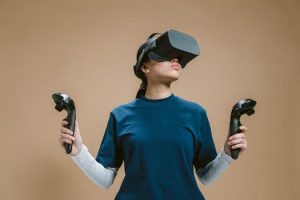Personalized learning paths for diverse student needs
Education is not a one-size-fits-all approach. Each student has unique learning needs and styles that require a personalized approach. As educators, it is our responsibility to create an inclusive learning environment where all students can thrive and reach their full potential. This is where personalized learning paths come into play. By tailoring the learning experience to the individual needs and interests of students, personalized learning paths not only improve academic achievement but also foster a deeper love for learning.
The Benefits of Personalized Learning Paths
Personalized learning paths are becoming increasingly popular in education, and for good reason. Here are some of the key benefits of implementing personalized learning paths in your classroom:
1. Improved Academic Achievement
One of the main benefits of personalized learning paths is improved academic achievement. By catering to the individual needs of students, personalized learning paths can help bridge learning gaps and provide a more well-rounded education. This ultimately leads to higher test scores and a deeper understanding of the material.
2. Increased Engagement
When students feel that their learning is relevant and personalized to their own interests and goals, they are more likely to feel engaged in the learning process. This increased engagement can lead to a more positive attitude towards learning and a higher level of participation in the classroom.
3. Catering to Different Learning Styles
Not all students learn the same way. Some may respond better to visual stimuli, while others may do better with hands-on activities. Personalized learning paths can take these differences into account and provide students with the resources and activities that best suit their learning style. This can greatly improve their understanding and retention of the material.
4. Fostering Independence and Autonomy
Personalized learning paths require students to take a more active role in their education. They are given more freedom to choose how and when they learn, which can help foster independence and autonomy. This is a crucial skill for success in the real world, where individuals are expected to take charge of their own learning and personal growth.
How to Implement Personalized Learning Paths
Now that we understand the benefits of personalized learning paths, let’s explore some ways to implement them in the classroom:
1. Conduct Assessments to Identify Learning Needs
Before you can create personalized learning paths for your students, it’s important to understand their individual learning needs and goals. This can be done through various assessments, such as diagnostic tests, surveys, and self-reflection activities. Gathering this information will help you tailor the learning experience for each student.
2. Offer a Variety of Learning Materials and Activities
Different students respond to different learning materials and activities. It’s important to provide a variety of resources and activities that cater to various learning styles and interests. This can include videos, hands-on projects, interactive games, and more.
3. Encourage Self-Paced Learning
Personalized learning paths allow students to learn at their own pace. This means some students may move through material quicker than others. Encourage self-paced learning by providing students with a variety of learning resources, such as online tutorials or independent projects, that they can use to continue their learning journey.
4.Worldwide Knowledge sharing
With the rise of technology, students can access learning materials and resources from all over the world. Encourage them to explore different perspectives and ideas by incorporating global resources into their personalized learning paths. This not only expands their knowledge but also promotes cultural awareness and understanding.
Challenges of Implementing Personalized Learning Paths
While personalized learning paths have many benefits, they can also present some challenges. Here are some common challenges that educators may face when implementing personalized learning paths:
1. Time and Resources
Creating personalized learning paths can be time-consuming and may require additional resources, such as technology and supplemental materials. This can be a barrier for some educators who may already have a heavy workload.
2. Tracking Student Progress
With each student following a different learning path, it can be challenging to track their progress and ensure they are meeting learning objectives. Educators may need to come up with alternative methods for assessing student achievement and understanding.
3. Resistance to Change
Sometimes, students and parents may resist the idea of personalized learning paths. Some students may prefer a traditional, more structured approach to learning, while their parents may have concerns about their child’s academic progress and achievement.
The Bottom Line
Personalized learning paths hold immense potential for improving the educational experience for all students. By catering to individual needs and interests, personalized learning paths can lead to improved academic achievement, increased engagement and autonomy, and a deeper love for learning. While implementing personalized learning paths may present some challenges, the benefits far outweigh them. Every student has the right to a personalized learning experience that sets them up for success in the classroom and in life.







